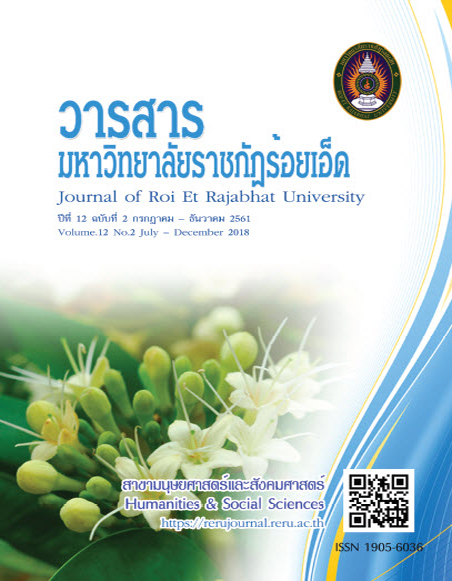The Identification Factors of Innovation Creativity in Organization through the Analytic Hierarchy Process (AHP): A Case Study of Building Material Factory
Keywords:
Innovative Creativity, Organization, Analytic Hierarchy ProcessAbstract
The purposes of this research are 1) to study the Analytic Hierarchy Process (AHP) 2) to analyze the key factors of innovation creativity in organization and 3) to compare the analytical results from two classified groups, i.e., engineer and researcher group and administrator group from engineering, production and research and development department. The hierarchical structure was designed and developed to identify the factors by using AHP through questionnaire. Innovative staffs in head position were surveyed via a questionnaire. Furthermore, population samples were divided into two groups, i.e., engineers or researchers group and administrators group in order to compare their analytic results. The results of the study were as follow: The most important factor of innovation creativity in organization is the valued innovative human resource at the importance factor level of 0.1237. Smart and creative staff will push the organization to reach successful innovation. Furthermore the result of two survey groups are significantly different depending on levels of responsibility decentralization, organization climate of innovation creativity and team coordination leader. The Consistency Ratio (C.R.) is less than 0.10.
References
ไพโรจน์ ปิยะวงศ์วัฒนา. (2555). การจัดการเชิงกลยุทธ์เทคโนโลยีเเละนวัตกรรม. กรุงเทพฯ: โรงพิมพ์เเห่งจุฬาลงกรณ์ มหาวิทยาลัย.
สิรินันท์ วิชิตญาณ. (2552). กระบวนการนวัตกรรมของเครือซิเมนต์ไทยและปัจจัยที่ส่งผลต่อความสำเร็จ กรณีศึกษา บริษัทเดอะ สยาม เซรามิค กรุ๊ป อินดัสทรี่ส์ จำกัด. วิทยานิพนธ์ ศิลปศาสตรมหาบัณฑิต สาขาวิชา เศรษฐศาสตร์ธุรกิจ. กรุงเทพฯ: มหาวิทยาลัยธรรมศาสตร์.
Bozkurt, V. (2000). Information, Community and Turkey. Istanbul: Sistem Yayincilik.
Deniz, D. D. (2015). Innovation management in global competition and competitive advantage. Procedia-Social and Behavioral Sciences, 195, 1365-1370.
Hitt, M. A., R. D. Ireland, and R. E. Hoskisson. (1999). Strategic Management: Competitiveness and Globalization. 3th ed. Boston: South-Western College.
Marquardt, M. and A. Reynolds. (1994). The global learning organization. Burr Ridge, IL: Irwin Professional.
Martins, E. C. and F. Terblanche. (2003). Building organization culture that stimulates creativity and innovation. European Journal of Innovation Management, 6(1), 64-74.
Saaty, T. (1980). The analytic hierarchy process. New York: McGraw-Hill Company.
Tekin, M., H. K. Gules, and A. Ogut. (2003). Degisim Caginda Teknoloji Yonetimi. Sehir: Nobel Yayin Dagitim.
Downloads
Published
How to Cite
Issue
Section
License
บทความที่ได้รับการตีพิมพ์เป็นลิขสิทธิ์ของวารสารมหาวิทยาลัยราชภัฎร้อยเอ็ด
ข้อความที่ปรากฏในบทความแต่ละเรื่องในวารสารวิชาการเล่มนี้เป็นความคิดเห็นส่วนตัวของผู้เขียนแต่ละท่านไม่เกี่ยวข้องกับมหาวิทยาลัยราชภัฎร้อยเอ็ด และคณาจารย์ท่านอื่นๆในมหาวิทยาลัยฯ แต่อย่างใด ความรับผิดชอบองค์ประกอบทั้งหมดของบทความแต่ละเรื่องเป็นของผู้เขียนแต่ละท่าน หากมีความผิดพลาดใดๆ ผู้เขียนแต่ละท่านจะรับผิดชอบบทความของตนเองแต่ผู้เดียว



